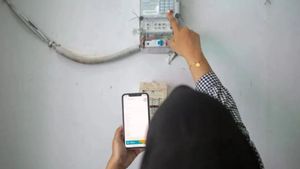JAKARTA - President Director of PT Bank Seabank Indonesia Sasmaya Tuhuleley said digital banks can help drive the economy in Indonesia to be more inclusive amid the current digitalization era.
"The role of a digital bank is to encourage economic development in Indonesia to be more inclusive to provide the widest possible access to finance for the community," said Sasmaya in the Banking Trends Webinar in 2023, quoted from Antara, Wednesday 18 January.
Sasmaya said that bank digitization responds to needs and developments in which digital transactions are increasingly being carried out by the public, such as during the COVID-19 pandemic.
The factor of Indonesia's very large population and Indonesia's vast territory consisting of many islands will make it difficult for banks to penetrate, especially in remote areas by building physical branch offices.
For this reason, the presence of digital banks and banking digitization can fill the void that cannot be reached by banks that rely on the presence of physical branch offices.
Banking is digitizing to improve efficiency and consumer experience. Digital banks also perform an intermediary function in the form of lending and raising funds, with targeted consumers being the middle and lower economic class.
A digital bank is a bank that builds a banking experience and exists only in the virtual world. Digital banks will not have physical offices like banks in general.
Digital banks use digital applications to make it easier for customers to make transactions such as deposits, use special verification with certain technologies for security, and utilize big data and machine learning to study customer behavior.
According to Sasmaya, the development of digital banks in 2023 in Indonesia faces a number of challenges, including the uneven distribution of internet access throughout Indonesia, there is a need to increase infrastructure capacity.
Another challenge is the unavailability of assets such as electronic data centers for micro, small and medium enterprises so that banks can serve this segment, and the need for special regulatory support for digital banks so that they can grow stronger and healthier.
Sasmaya said that in the future there will be more bank product innovations that are completely digital from end to end to improve consumer experience.
Then, there is a great need for the development of new applications that include technologies, services and features that are more consumer-centric, and buy now pay later (paylater) will become increasingly popular in 2023.
"The role of a digital bank can help access finance for economic actors, both buyers and sellers on e-commerce platforms," he said.
For business models, digital banks can target the majority of Indonesians with middle and lower incomes where most of them do not have bank accounts, or do not have any access to credit from banks even though they already have bank accounts, so that digital banks can provide access extensive finance for them.
SEE ALSO:
To serve this segment, digital banks need to build business models and processes that are completely different from current banking practices.
In addition, several digital banks with big data capacities and good risk management are likely to conduct direct lending to the public. QRIS is a payment alternative that will increasingly be used by the public, especially at retail outlets.
For digital banks, technology is the main lever to help every business process, service or security of a business process so that digital banks need large assets for investment in technology and human resources.
"We estimate that in 2023 many new digital banks will emerge which are the result of the transformation of non-digital banks," he said.
The English, Chinese, Japanese, Arabic, and French versions are automatically generated by the AI. So there may still be inaccuracies in translating, please always see Indonesian as our main language. (system supported by DigitalSiber.id)

















